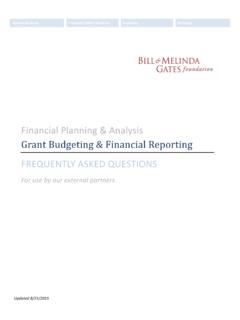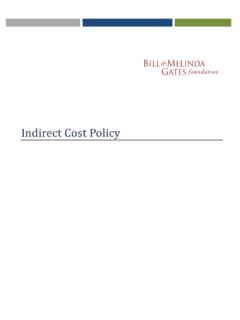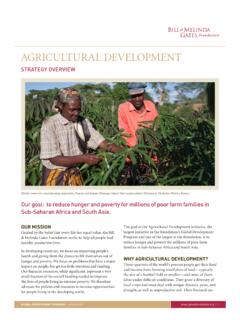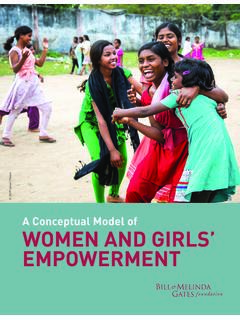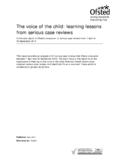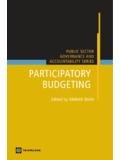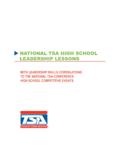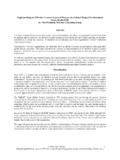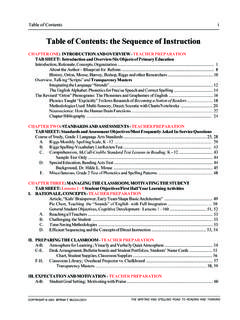Transcription of Lessons from Research and the Classroom
1 Lessons from Research and the Classroom : Implementing High-Quality Pre-K that Makes a Difference for Young Children Jim Minervino Ready On Day One September 2014 Table of Contents Introduction .. 1 Quality in Center-Based Early Learning: High-Level Findings and Trends .. 3 Early Learning: The New Fact Base and Cost Sustainability .. 8 The Essential Elements of High-Quality Pre-K: An Analysis of Four Exemplar Programs .. 21 [Title of whitepaper or section] | 1 Introduction In the United States today, a degree beyond high school paves the way for young people to support themselves, engage in their communities, and achieve their dreams.
2 The Bill & Melinda Gates Foundation supports innovative approaches in K-12 public schools and higher education to ensure that students graduate from high school ready to succeed in postsecondary education and beyond. Yet the path to a postsecondary degree begins before a child enters high school. High-quality early learning helps children enter kindergarten ready to learn and prepared to thrive in elementary school and beyond. Since 2005, the foundation has worked with public, private, and community partners to strengthen early learning in Washington State.
3 EARLY LEARNING IN WASHINGTON STATE We support policy development, Research , and program implementation to improve the quality of early learning and strengthen the connections with K-12 schools, including: Evidence-based home visiting programs that pair at-risk families with trained professionals to provide support for pregnant mothers and families with infants and young children; Statewide implementation of Early Achievers, which offers coaching, support, and incentives for early learning providers to improve program quality; WaKIDS, which includes a whole-child, observational assessment and increased collaboration among early learning educators, families, and kindergarten teachers as children enter kindergarten.
4 And PreK-3rd investments in Washington State school and educational service districts and their early learning partners to align quality instruction and promote deep engagement of educational leaders across the early learning/early elementary continuum so that the gains young learners make are sustained and deepened as they advance into upper elementary grades and beyond. Through close collaboration among policymakers, providers, and early childhood advocates, Washington State is building an early learning system that is focused on improving quality and helping young children enter kindergarten ready to learn.
5 Washington State is not alone. Over the past two decades, dozens of states have expanded early learning opportunities by providing pre-K to three- and four-year olds, launching home visiting services to expectant and new parents, and offering training and support to help child care providers increase the quality of their care. Since 2002, the percentage of four-year-old children participating in Head Start and state-funded pre-K increased from 26 to 38 While access to pre-K and other early learning programs has increased, a growing body of Research shows that the quality of these programs has a significant impact on student outcomes.
6 At the same time, the definition of what makes a program high-quality is far from settled. 1 Barnett, , Carolan, , Squires, , Clarke Brown, K. (2013). The State of Preschool 2013: State preschool yearbook. New Brunswick, NJ: National Institute for Early Education Research . Barnett, , Robin, , Hustedt, , Schulman, (2003). The State of Preschool: 2003 State preschool yearbook. New Brunswick, NJ: National Institute for Early Education Research . [Title of whitepaper or section] | 2 EARLY LEARNING THAT STICKS Beginning in 2012, the foundation commissioned a series of Research papers to better understand the changing early learning landscape.
7 Specifically, these papers addressed whether pre-K programs produced gains in student achievement that persisted into the early elementary grades; whether high-quality programs could be cost sustainable; and what program features contribute to strong interactions between teachers and children, the central ingredient in high-quality programs. The result is the Research presented here, along with a companion piece on the early childhood workforce. These three papers are based on published Research , program evaluations, and extensive consultation with experts in the early childhood field.
8 The Research was iterative. As a result, conclusions about the components of high-quality including the importance of degrees for lead teachers evolved based on new information. The papers are presented sequentially to show the evolution of the project over approximately 18 months, and should be read together. Quality in Center-Based Early Learning: High-Level Findings and Trends (January 2013) Early Learning: The New Fact Base and Cost Sustainability (September 2013) The Essential Elements of High-Quality Pre-K: An Analysis of Four Exemplar Programs (January 2014) The Research shows that select pre-K programs are producing significant and sustained gains for young children at a lower cost-per-child than previously attained.
9 How these programs succeed is not a mystery. Exemplar programs focus on improving the interactions between teachers and children. They share a set of common features that foster high-quality instruction, support educators and young learners, and benefit from a positive enabling environment. For some in the early childhood education field, these findings may not seem surprising. After all, Research dating to the 1960s has found that high-quality early learning has long-term benefits for children, especially those from low-income families.
10 However, the valuable Lessons learned from high-quality programs can and should inform efforts to expand access to pre-K and help all children enter school ready to learn. NEXT STEPS Looking ahead, the foundation will focus on listening and learning from the funders, advocates, teachers, parents, and early childhood leaders who have worked on these issues for many years. We intend to share our Research broadly and collaborate with a wide range of partners to build on the work already underway to expand high-quality pre-K in Washington State and nationally.
